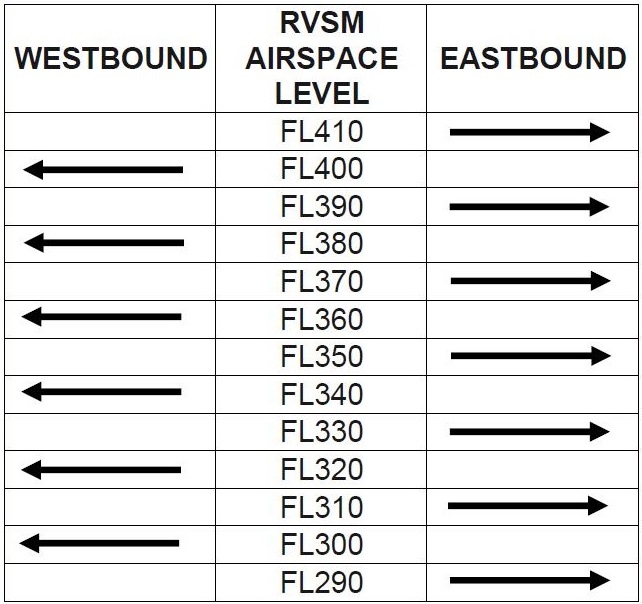1. RULES APPLICABLE TO ALL IFR FLIGHTS
1.1 Aircraft Equipment
Aircraft shall be equipped with suitable instruments and with navigation equipment appropriate to the route to be flown.
1.2 Minimum Levels
Except when necessary for take-off or landing or when specifically authorized by the appropriate authority, an IFR flight shall be flown at a level that is not below the minimum flight altitude established within each sector or along each ATS route.
a) Over high terrain and in mountainous areas, at a level which is at least 600 m (2000 ft) above the highest obstacle located within 8km of the estimated position of the aircraft;
b) Elsewhere than as specified in a), at a level which is at least 300 m (1000 ft) above the highest obstacle located within 8 km of the estimated position of the aircraft.
NOTE : The estimated position of the aircraft will take account of the navigational accuracy which can be achieved on the relevant route segment, having regard to the navigational facilities available on the ground and in the aircraft.
1.3 Change from IFR Flight to VFR Flight
1.3.1 An aircraft electing to change the conduct of its flight from compliance with the instrument flight rules to compliance with the visual flight rules shall, if a flight plan was submitted, notify the appropriate air traffic services unit specifically that the IFR flight is cancelled and communicate thereto the changes to be made to its current flight plan.
1.3.2 When an aircraft operating under the instrument flight rules is flown in or encounters visual meteorological conditions, it shall not cancel its IFR flight unless it is anticipated, and intended, that the flight will be continued for a reasonable period of time in uninterrupted visual meteorological conditions.
a) Over high terrain and in mountainous areas, at a level which is at least 600 m (2000 ft) above the highest obstacle located within 8km of the estimated position of the aircraft;
b) Elsewhere than as specified in a), at a level which is at least 300 m (1000 ft) above the highest obstacle located within 8 km of the estimated position of the aircraft.
NOTE : The estimated position of the aircraft will take account of the navigational accuracy which can be achieved on the relevant route segment, having regard to the navigational facilities available on the ground and in the aircraft.
1.3.2 When an aircraft operating under the instrument flight rules is flown in or encounters visual meteorological conditions, it shall not cancel its IFR flight unless it is anticipated, and intended, that the flight will be continued for a reasonable period of time in uninterrupted visual meteorological conditions.
2. RULES APPLICABLE TO IFR FLIGHTS WITHIN CONTROLLED AIRSPACE
2.1 IFR flights shall comply with the provisions of 3.6 of ICAO Annex 2 to the Convention on International Civil Aviation when operated in controlled airspace.
An IFR flight operating in cruising flight in controlled airspace shall be flown at a cruising level selected from the tables of cruising levels in Appendix 3 of ICAO Annex 2, except that the correlation of levels to track prescribed therein shall not apply whenever otherwise indicated in air traffic control clearances or specified by the appropriate ATS authority in the Aeronautical Information Publication (AIP).
NOTE: When at or above FL290, aircraft flying magnetic track shall maintain RVSM levels.
2.2 RVSM TABLE
When between FL290 and FL410 inclusive, aircraft flying magnetic tracks shall maintain RVSM Levels as indicated in the table below.
NOTE
: This provision does not preclude the use of cruise climb techniques by aircraft in supersonic flight provided that coordination has been arranged in advance with the adjacent FIR, wherein the flight has to continue.
An IFR flight operating in cruising flight in controlled airspace shall be flown at a cruising level selected from the tables of cruising levels in Appendix 3 of ICAO Annex 2, except that the correlation of levels to track prescribed therein shall not apply whenever otherwise indicated in air traffic control clearances or specified by the appropriate ATS authority in the Aeronautical Information Publication (AIP).
NOTE: When at or above FL290, aircraft flying magnetic track shall maintain RVSM levels.
2.2 RVSM TABLE
When between FL290 and FL410 inclusive, aircraft flying magnetic tracks shall maintain RVSM Levels as indicated in the table below.
3. RULES APPLICABLE TO IFR FLIGHTS OUTSIDE CONTROLLED AIRSPACE
Nil
